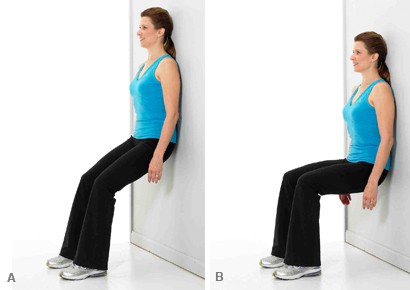By Laura Gordon
From time to time you will have a client that comes to you with a knee problem. This blog is created to give you some ideas to try out, and if you like them and they are successful for you, you will want to add them into your practice.
Knees take the brunt of daily activities such as kneeling, walking, running, jumping, and sometimes falling. Pain in the knee area can come from wide range of causes. First let us acknowledge that pain is a good thing. It may be uncomfortable and interrupt activities, but pain is our body’s indicator that something needs our attention. It’s a symptom not the cause, and as complimentary health practitioners, which massage therapists are, we like to get to the cause.
Referral Pain: Acute (quick onset and short duration) and general pain around the knee capsule most often is referral pain from muscles in the thigh that due to hypertonus, toxicity, fascia adhesion, or injury. Massaging the IT band, quads and hamstrings with attention given to compression, trigger point and friction not only to the muscles but, also to the ligament and tendons around and below the knee, will be beneficial to the client. Adding hot compresses prior to the massage will assist in loosening and relaxing the area. Demonstrating and adding foam rolling as homework for the client will further assist in breaking up muscle and fascia adhesions and bring blood flow to the region. Blood flow brings nutrients needed for repair and takes away waste material (i.e. lactic acid) – much like massage does!
Tendon and Ligament Pain: This pain, unless caused by an injury, is most often chronic (slow onset and long duration) and occurs in middle aged and older clients. It is an indication of the formation of adhesive scar tissue in the tendons, ligaments and joint of the knee. In general, the build of this scar tissue binds the joint creating an environment for more adhesions and increased pain. Not fun at all! Palpating around the area of pain for adhesions is a first step which is usually along the joint line or attachment site. The second is to friction the location of the adhesion for five or six minutes using the forefinger if the area is that small or the medial side of the palm if it is larger area. Next apply deep massage to muscles above, around, and below the knee then repeat the friction as described above for another five or six minutes. According to Ben Benjamin, who studied under Dr. James Cyriax, the client will need to come back for this treatment twice a week for three or four weeks. If the client cannot perform a full range of motion of the knee after the treatment, the therapist assists the client in passive ROM. Homework for  the client’s first week is swinging the effected leg from a seated position for several minutes two or three times a day. After the second week, with their back to the wall, the client should lower their upper body to do squats no deeper than a 45 degree angle of the effected knee and building up to a 90 degree squat over time.
the client’s first week is swinging the effected leg from a seated position for several minutes two or three times a day. After the second week, with their back to the wall, the client should lower their upper body to do squats no deeper than a 45 degree angle of the effected knee and building up to a 90 degree squat over time.
This is a brief over view of some techniques for the knee. It is a complex joint and a more thorough study would be appropriate if you are going into sports massage.
Take a few minutes and palpate one of your knees to feel for the joint line. Is one knee more tender than the other? Try some friction to the tender area and let us know if the tenderness decreased or increased.
.










Comments are closed.